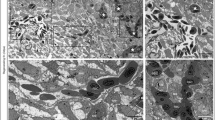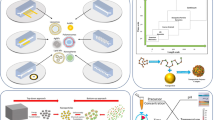Abstract
Angiogenesis is crucial during many physiological processes, and is influenced by various biochemical and biomechanical factors. Two such factors: VEGF and Ang 1 are known to be critical and we demonstrate here their effect of sprout formation in an in vitro microfluidic system. Previously, we have developed a 3D hybrid, agent-field model where individual cells are modeled as sprout-forming agents in a matrix field. We have conducted microfluidic experiments under different concentrations of VEGF and Ang 1 and analyzed the difference in sprout number and sprout lengths using Decision Tree Analysis. We demonstrate that under specific transition probabilities, the model gives us capillary characteristics similar to those seen in experiments (R 2 ~ 0.82–0.99). Thus, this model can be used to cluster sprout morphology as a function of various influencing factors and, within bounds, predict if a certain growth factor will affect migration or proliferation as it impacts sprout morphology










Similar content being viewed by others
References
Adams, R. H., and K. Alitalo. Molecular regulation of angiogenesis and lymphangiogenesis. Nat. Rev. Mol. Cell Biol. 8:464–478, 2007.
Bogdanovic, E., V. Nguyen, and D. J. Dumont. Activation of Tie2 by angiopoietin-1 and angiopoietin-2 results in their release and receptor internalization. J. Cell Sci. 119:3551–3560, 2006.
Brekken, R. A., and P. E. Thorpe. Vascular endothelial growth factor and vascular targeting of solid tumors. Anticancer Res. 21(6B):4221–4229, 2001.
Cebe Suarez, S., M. Pieren, L. Cariolato, S. Arn, U. Hoffmann, A. Bogucki, C. Manlius, J. Wood, and K. Ballmer-Hofer. A VEGF-A splice variant defective for heparan sulfate and neuropilin-1 binding shows attenuated signaling through VEGFR-2. Cell. Mol. Life Sci. 63(17):2067–2077, 2006.
Chung, B., L. Flanagan, S. Rhee, P. Schwarz, A. Lee, E. Monuki, and N. Jeon. Human neural stem cell growth and differentiation in a gradient-generating microfluidic device. Lab. Chip. 5(4):401–406, 2005.
Chung, S., R. Sudo, P. J. Mack, C. R. Wan, V. Vickerman, and R. D. Kamm. Cell migration into scaffolds under co-culture conditions in a microfluidic platform. Lab. Chip. 9(2):269–275, 2009.
Das, A., H. Asada, D. Lauffenburger, and R. D. Kamm. A hybrid continuum-discrete modelling approach to predict and control angiogenesis: analysis of combinatorial growth factor and matrix effects on vessel-sprouting morphology. Philos. Trans. A Math. Phys. Eng. Sci. 368(1921):2937–2960, 2010.
Davis, S., T. H. Aldrich, P. F. Jones, A. Acheson, D. L. Compton, V. Jain, T. E. Ryan, J. Bruno, C. Radziejewski, P. C. Maisonpierre, and G. D. Yancopoulos. Isolation of angiopoietin-1, a ligand for the TIE2 receptor, by secretion-trap expression cloning. Cell 87(7):1161–1169, 1996.
Folkman, J., and Y. Shing. Angiogenesis. J. Biol. Chem. 267(16):10931–10934, 1992.
Frisk, T., S. Rydholm, T. Liebmann, H. Svahn, G. Stemme, and H. Brismar. A microfluidic device for parallel 3-D cell cultures in asymmetric environments. Electrophoresis 28:4705–4712, 2007.
Garcia-Cardeña, G., J. Comander, K. R. Anderson, B. R. Blackman, and M. A. Gimbrone. Biomechanical activation of vascular endothelium as a determinant of its functional phenotype. Proc. Natl Acad. Sci. U.S.A. 98:4478–4485, 2001.
Gavard, J., V. Patel, and J. S. Gutkind. Angiopoietin-1 prevents VEGF-induced endothelial permeability by sequestering Src through mDia. Dev. Cell 14:25–36, 2008.
Gengrinovitch, S., S. M. Greenberg, T. Cohen, et al. Platelet factor-4 inhibits the mitogenic activity of VEGF121 and VEGF165 using several concurrent mechanisms. J. Biol. Chem. 270:15059–15065, 1995.
Gomez-Sjoberg, R., A. Leyrat, D. Pirone, C. Chen, and S. Quake. Versatile, fully automated, microfluidic cell culture system. Anal Chem. 79:8557–8563, 2007.
Gu, W., X. Zhu, N. Futai, B. Cho, and S. Takayama. Computerized microfluidic cell culture using elastomeric channels and Braille displays. Proc. Natl Acad. Sci. U.S.A. 101(45):15861–15866, 2004.
Hayes, A. J., W. Q. Huang, J. Mallah, D. Yang, M. E. Lippman, and L. Y. Li. Angiopoietin-1 and its receptor Tie-2 participate in the regulation of capillary-like tubule formation and survival of endothelial cells. Microvasc. Res. 58(3):224–237, 1999.
Helm, C. L., M. E. Fleury, A. H. Zisch, F. Boschetti, and M. A. Swartz. Synergy between interstitial flow and VEGF directs capillary morphogenesis in vitro through a gradient amplification mechanism. Proc. Natl Acad. Sci. U.S.A. 102(44):15779–15784, 2005.
Hernández Vera, R., E. Genové, L. Alvarez, S. Borrós, R. Kamm, D. Lauffenburger, and C. E. Semino. Interstitial fluid flow intensity modulates endothelial sprouting in restricted Src-activated cell clusters during capillary morphogenesis. Tissue Eng. Part A 15(1):175–185, 2009.
Hua, F., S. Hautaniemi, R. Yokoo, D. A. Lauffenburger. Integrated mechanistic and data-driven modelling for multivariate analysis of signaling pathways. J. R. Soc. Interface 3(9):515–526, 2006.
Huang, S., and D. Ingber. Shape-dependent control of cell growth, differentiation, apoptosis: switching between attractors in cell regulatory networks. Exp. Cell Res. 261:91–103, 2000.
Jeon, N. L., H. Baskaran, S. K. W. Dertinger, G. M. Whitesides, L. Van De Water, and M. Toner. Neutrophil chemotaxis in linear and complex gradients of interleukin-8 formed in a microfabricated device. Nat. Biotechnol. 20(8):826–830, 2002.
Jones, M. K., M. Tomikawa, B. Mohajer, and A. S. Tarnawski. Gastrointestinal mucosal regeneration: role of growth factors. Front Biosci. 15(4):D303–D309, 1999.
Jośko, J., B. Gwóźdź, H. Jedrzejowska-Szypułka, and S. Hendryk. Vascular endothelial growth factor (VEGF) and its effect on angiogenesis. Med. Sci. Monit. 6(5):1047–1052, 2000.
Koblizek, T. I., C. Weiss, G. D. Yancopoulos, U. Deutsch, and W. Risau. Angiopoietin-1 induces sprouting angiogenesis in vitro. Curr. Biol. 8(9):529–532, 1998.
Kothapalli, C. R., S. de Valence, J. E. Van Veen, S. Chung, F. B. Gertler, and R. D. Kamm. A high-throughput microfluidic assay to study axonal response to growth factor gradients. Lab. Chip. (in review).
Kwak, H. J., J. N. So, S. J. Lee, I. Kim, and G. Y. Koh. Angiopoietin-1 is an apoptosis survival factor for endothelial cells. FEBS Lett. 448(2–3):249–253, 1999.
Li, X., M. Stankovic, C. S. Bonder, et al. Basal and angiopoietin-1-mediated endothelial permeability is regulated by sphingosine kinase-1. Blood 111:3489–3497, 2008.
Maione, T. E., G. S. Gray, and J. Petro. Inhibition of angiogenesis by recombinant human platelet factor-4 and related peptides. Science 247:77–79, 1990.
Nakatsu, M., C. A. R. Sainson, J. N. Aoto, K. L. Taylor, M. Aitkenhead, S. Pérez-del-Pulgar, P. M. Carpenter, and C. C. W. Hughesa. Angiogenic sprouting and capillary lumen formation modeled by human umbilical vein endothelial cells (HUVEC) in fibrin gels: the role of fibroblasts and Angiopoietin-1. Microvasc. Res. 66:102–112, 2003.
Saadi, W., S. Rhee, F. Lin, B. Vahidi, B. Chung, and N. Jeon. Generation of stable concentration gradients in 2D and 3D environments using a microfluidic ladder chamber. Biomed. Microdevices 9(5):627–635, 2007.
Slungaard, A. Platelet factor 4: a chemokine enigma. Int. J. Biochem. Cell Biol. 37(6):1162–1167, 2005.
Sudo, R., S. Chung, I. K. Zervantonakis, V. Vickerman, Y. Toshimitsu, L. G. Griffith, and R. D. Kamm. Transport-mediated angiogenesis in 3D epithelial coculture. FASEB J. 23(7):2155–2164, 2009.
Teichert-Kuliszewska, K., P. C. Maisonpierre, N. Jones, A. I. Campbell, Z. Master, M. P. Bendeck, K. Alitalo, D. J. Dumont, G. D. Yancopoulos, and D. J. Stewart. Biological action of angiopoietin-2 in a fibrin matrix model of angiogenesis is associated with activation of Tie2. Cardiovasc. Res. 49(3):659–670, 2001.
Thomas, M., and H. G. Augustin. The role of the Angiopoietins in vascular morphogenesis. Angiogenesis 12(2):125–37, 2009. Epub 2009 May 16.
Tourovskaia, A., X. Figueroa-Masot, and A. Folch. Differentiation-on-a-chip: a microfluidic platform for long-term cell culture studies. Lab Chip. 5(1):14–19, 2005.
Vickerman, V., J. Blundo, S. Chung, and R. Kamm. Design, fabrication and implementation of a novel multi-parameter control microfluidic platform for three-dimensional cell culture and real-time imaging. Lab. Chip. 8(9):1468–1477, 2008.
von Hundelshausen, P., F. Petersen, and E. Brandt. Platelet-derived chemokines in vascular biology. Thromb. Haemost. 97:704–713, 2007.
Witzenbichler, B., P. C. Maisonpierre, P. Jones, G. D. Yancopoulos, and J. M. Isner. Chemotactic properties of angiopoietin-1 and -2, ligands for the endothelial-specific receptor tyrosine kinase Tie2. J. Biol. Chem. 273(29):18514–18521, 1998.
Yamamura, N., R. Sudo, M. Ikeda, and K. Tanishita. Effects of the mechanical properties of collagen gel on the in vitro formation of microvessel networks by endothelial cells. Tissue Eng. 13(7):1443–1453, 2007.
Zhu, W. H., A. MacIntyre, and R. F. Nicosia. Regulation of angiogenesis by vascular endothelial growth factor and angiopoietin-1 in the rat aorta model: distinct temporal patterns of intracellular signaling correlate with induction of angiogenic sprouting. Am. J. Pathol. 161(3):823–830, 2002.
Acknowledgments
We would like to thank Wahleed Farhat for designing the microfluidic device wafers. We would like to acknowledge NSF-EFRI grant# 0735997 and the Singapore-MIT Alliance for Research and Technology for funding.
Author information
Authors and Affiliations
Corresponding author
Additional information
Associate Editor David Odde oversaw the review of this article.
Electronic supplementary material
Below is the link to the electronic supplementary material.
Well developed sprouts were observed under conditions with relatively high concentration of Ang 1. The sprouts obtained were tubular with fewer active cells (Fig. 1). Poorly developed sprouts were obtained when the vEGF concentrations were high, but Ang 1 concentrations were low. They were not tubular and had many active cells along the sprouts. (Fig. 2)
Rights and permissions
About this article
Cite this article
Das, A., Lauffenburger, D., Asada, H. et al. Determining Cell Fate Transition Probabilities to VEGF/Ang 1 Levels: Relating Computational Modeling to Microfluidic Angiogenesis Studies. Cel. Mol. Bioeng. 3, 345–360 (2010). https://doi.org/10.1007/s12195-010-0146-7
Received:
Accepted:
Published:
Issue Date:
DOI: https://doi.org/10.1007/s12195-010-0146-7




